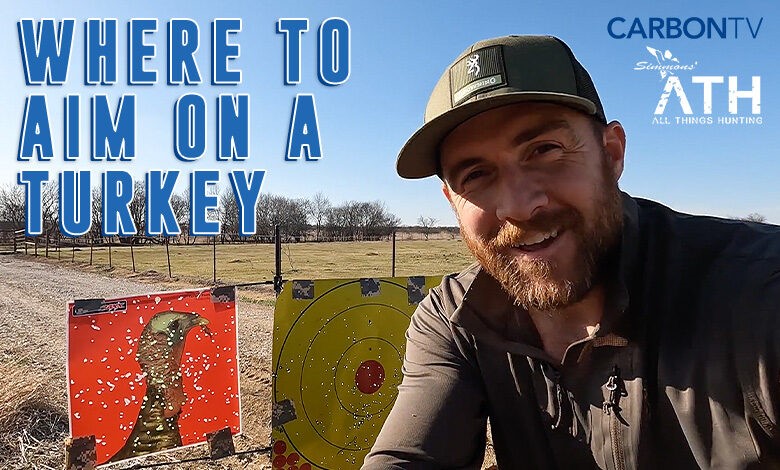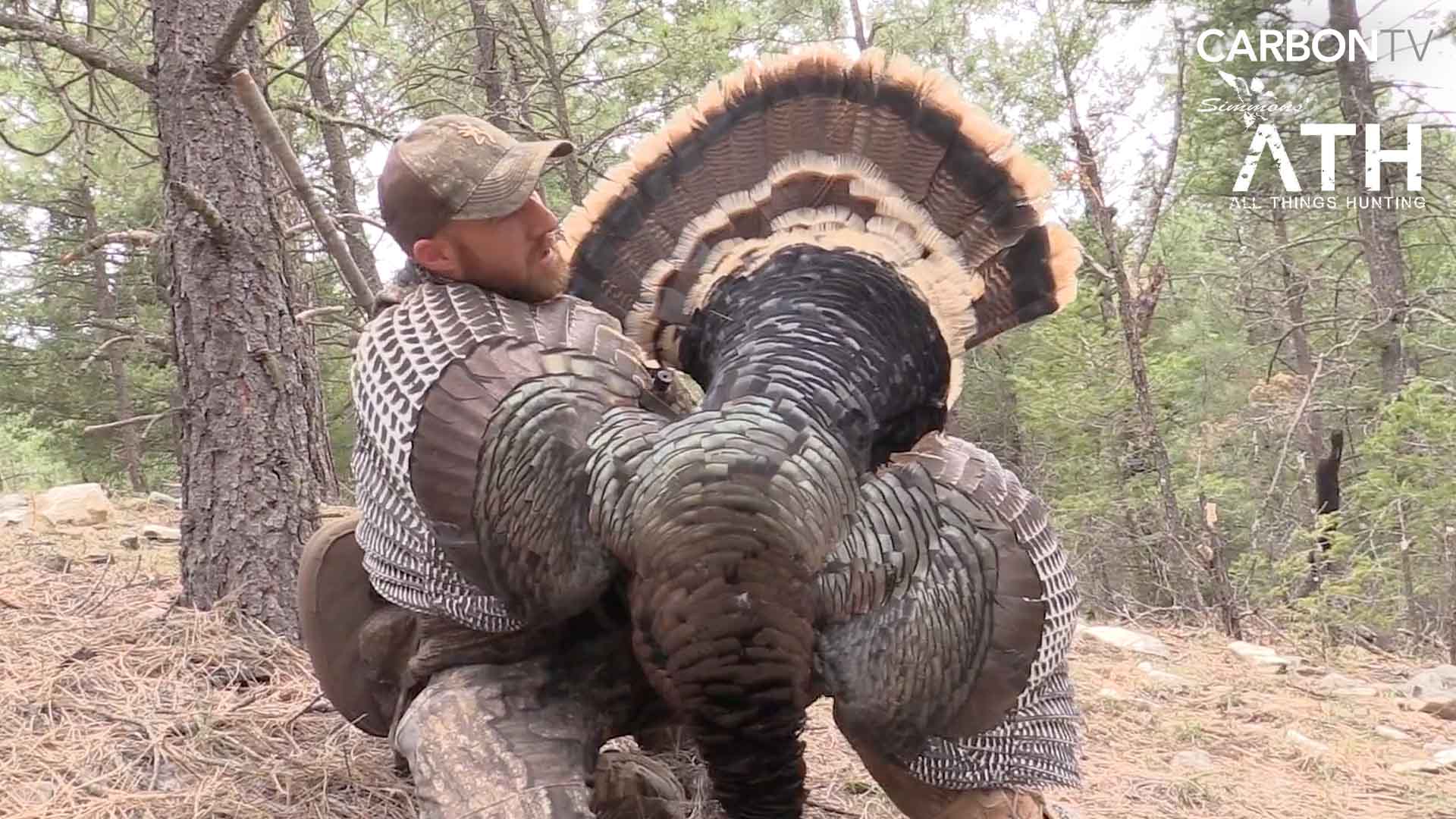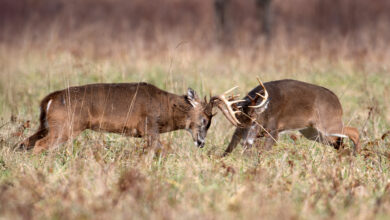
How to Aim at A Turkey
Turkey season is right around the corner, and getting a refresher course on where to aim when shooting a gobbler is a good idea! Remember to take your time, take some deep breaths, and take in the scenery! Here is some advice for anyone headed to the turkey woods this season!

Shotgun vs. Archery
When turkey hunting, we typically aim at the head or neck using a shotgun. We aim for the vitals in the body if using archery equipment. When shooting a turkey with a shotgun, it’s acceptable to aim at the upper part of the head, but it’s best to aim lower, where the skin of the head meets the feathers on the neck. Please consider how far away the turkey is and what the shot pattern will look like when it gets to him. Shooting a turkey with archery equipment requires different skills, and you want to aim for the vitals.
Where Are the Vitals?
The vitals include the head, neck, lungs, liver, and heart. Aiming to hit the lung and heart areas of a turkey with a bow is recommended. Finding the vitals will depend on how the turkey is standing. If a bird is standing (not strutting) and facing you, shoot him at the base of his beard. A bird facing away from you should be shot in the back between his upper wings. A strutting turkey facing you should be shot in the waddle or base of his head and neck area. And, finally, if he is strutting and facing away from you, shoot him in the base of the fan, where all his tail feathers come together.
Vital Tips to Aim on a Turkey
1) Hunting Near Turkey Roosts
Set up near where you believe the turkeys will fly down from their roosts and try to be there before sunrise. By doing this, you can surprise them and have a higher chance of bringing them in.
2) To attract roosting toms, use forceful sounds.
Never hesitate to confront a tom on the roost with a loud shriek, cut, or gobble if you hear him gobbling. He could get intrigued or furious enough to approach you as a result.
3) Bring a backup calling.
Turkeys may develop call aversion or disregard particular noises. It’s usually a good idea to have a variety of sounds in your toolbox, including mouth calls, slate calls, box calls, owl hooters, and coyote howls. Try out several noises to find which ones suit your placement the best.
4) Find the lone tom.
It might be challenging to entice away the dominant tom if you come across a flock of turkeys, including several hens and jakes. Instead, search for a lone tom who could respond to your calls and decoys better.
5) As decoys, place a single Jake or a Jake with a hen.
When a mature tom wants to demonstrate his authority, these decoys might cause him to have a territorial reaction. Place them around 20 yards away from you, ensuring they can be seen from various perspectives.
6) To pitch a roost, use a turkey wing.
By fluttering a wing on your thigh or the ground, this method imitates the sound of a turkey falling from its roost. This may serve as a warning to other turkeys that it is okay to descend and join you.
7) Develop your patience.
Hunting for turkeys may occasionally be difficult, especially if the birds do not cooperate or answer your calls. Don’t move about too much or give up too quickly. Sometimes it’s better to wait silently and pay close attention than to keep calling before you aim on a Turkey.
Written by Kyle Barefield of All Things Hunting on CarbonTV

